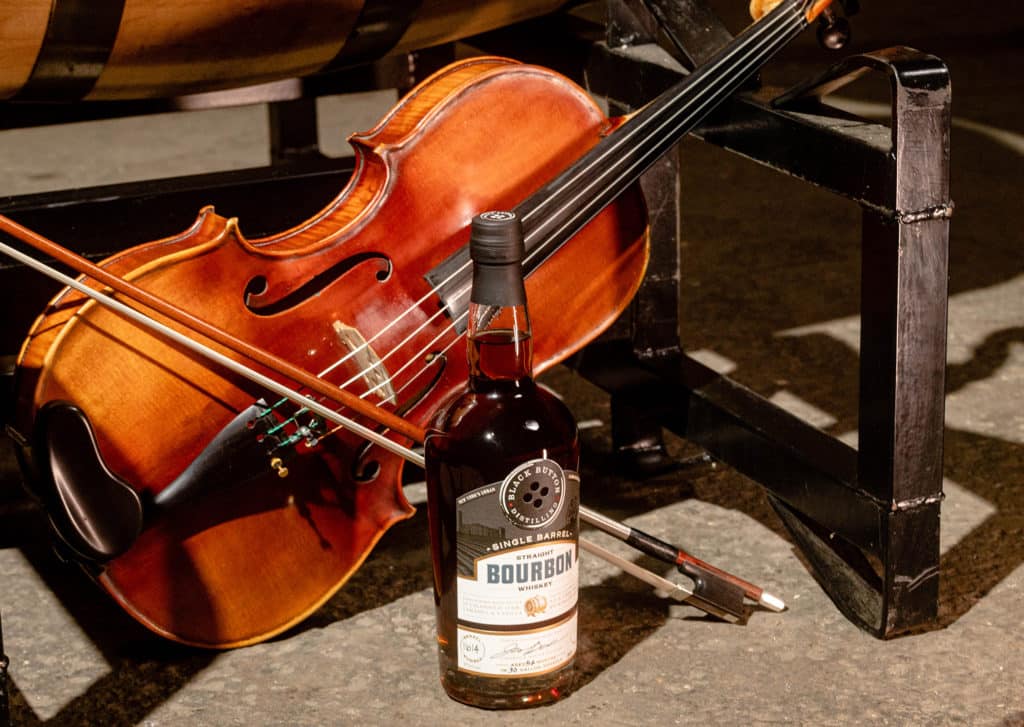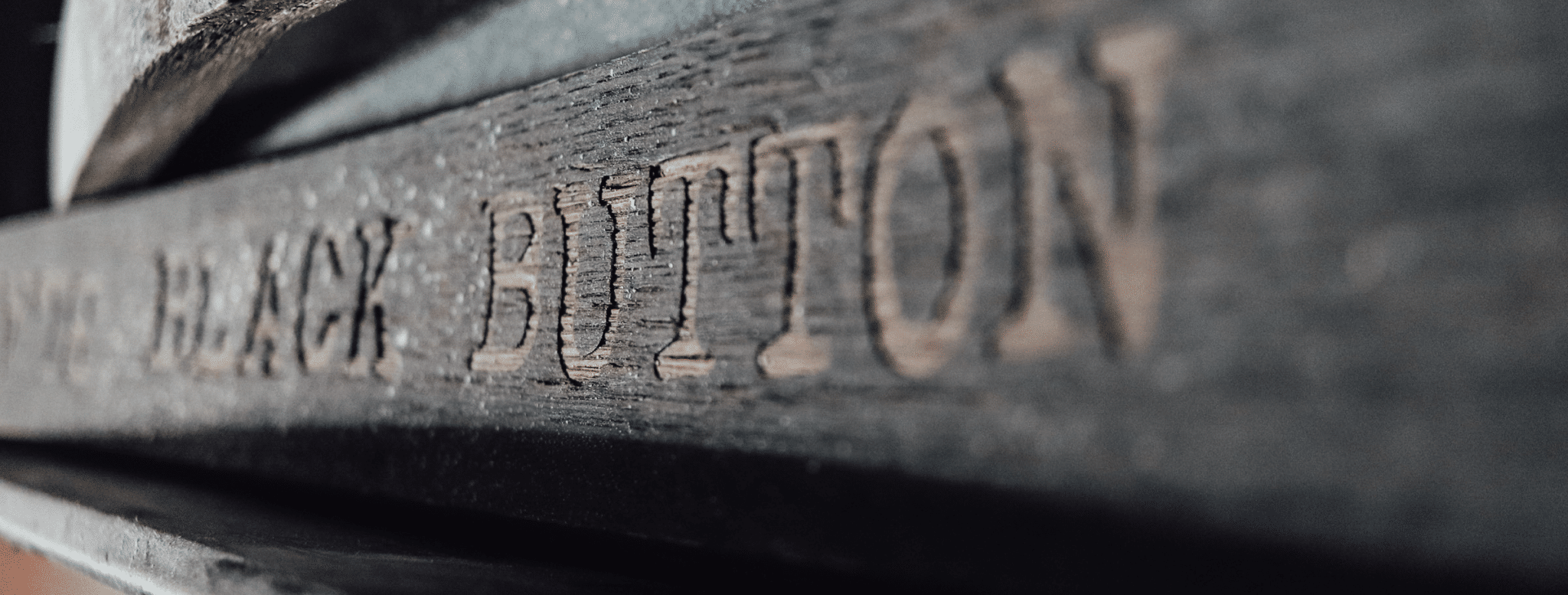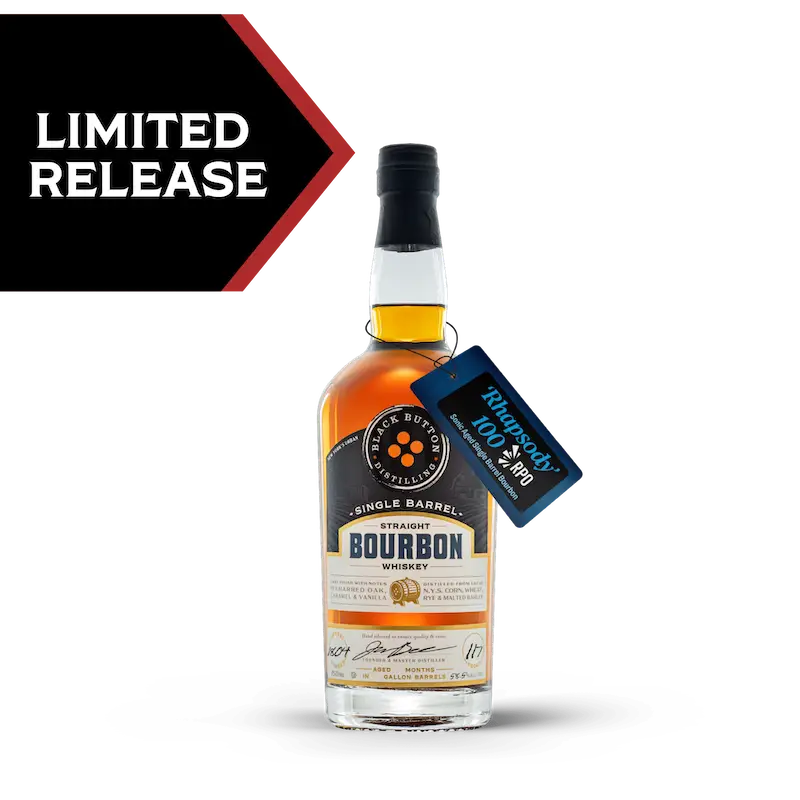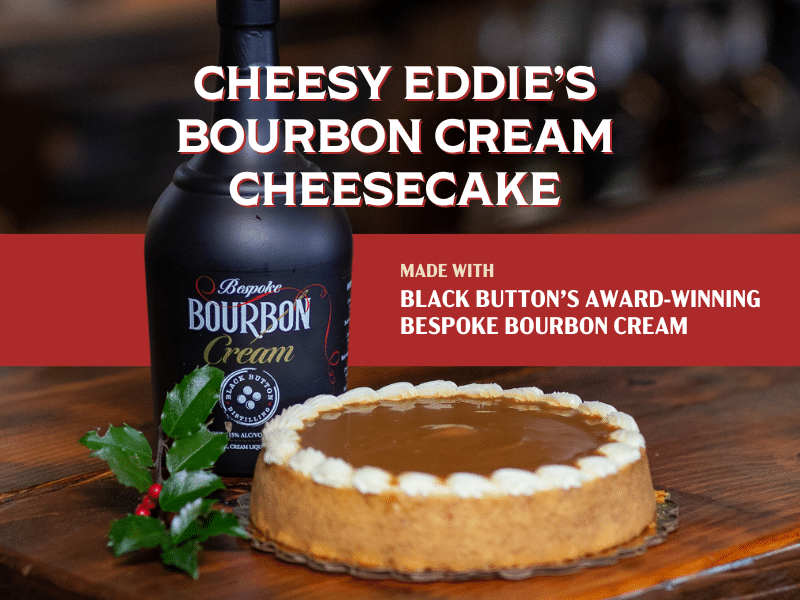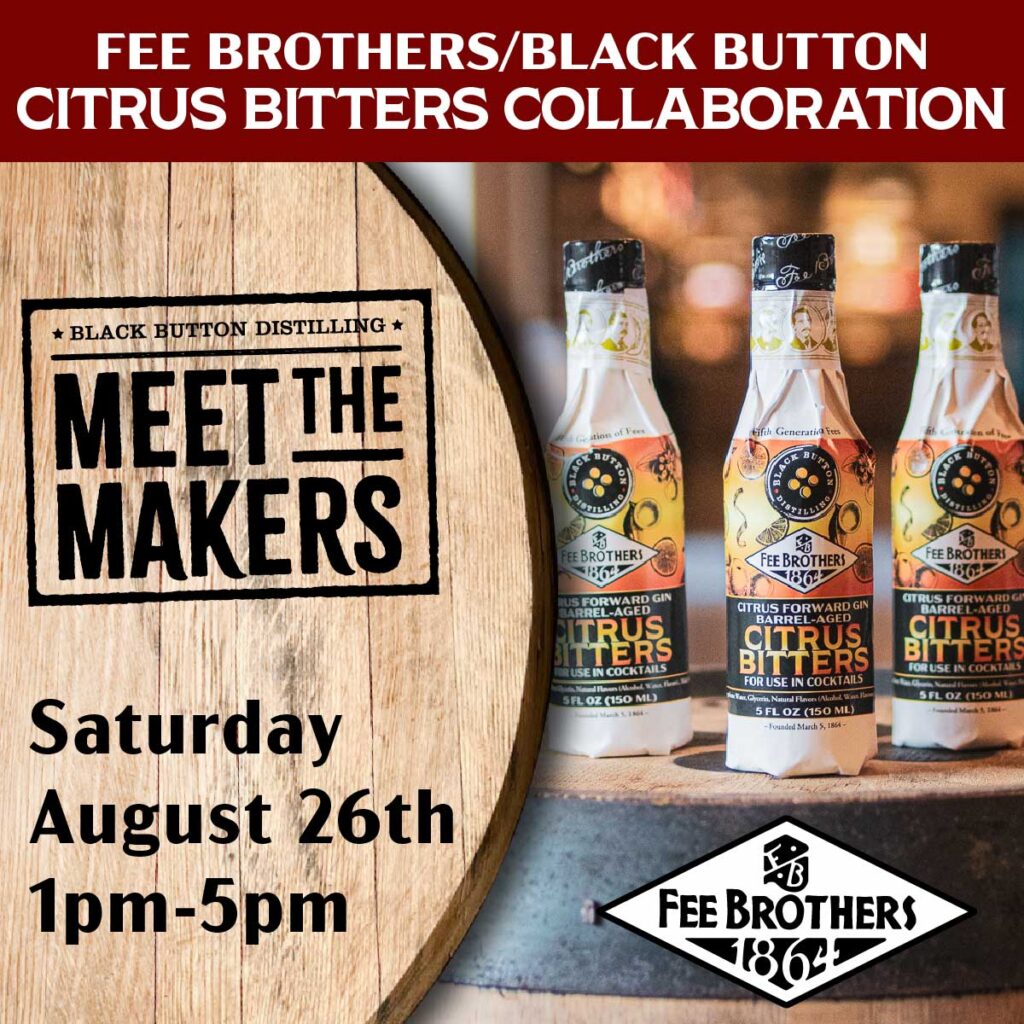Menu
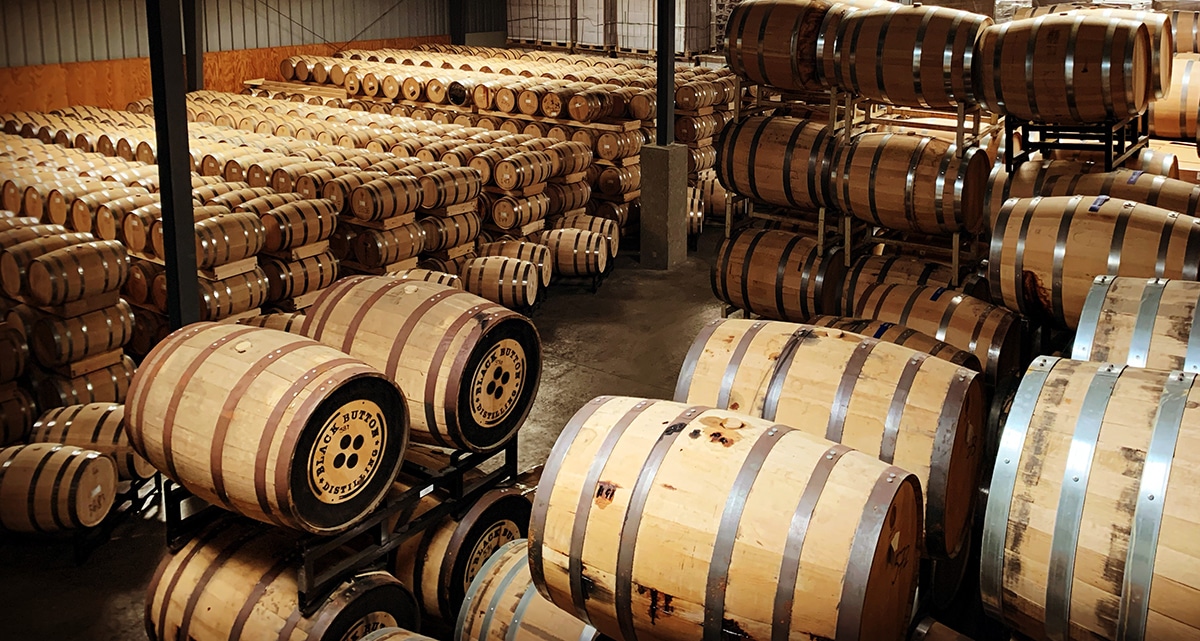
Behind The Still: Barrel Aging

Behind The Still: Barrel Aging
ROCHESTER BUSINESS JOURNAL
Written by Thomas Adams
September 27, 2013
The Black Button Distilling Rackhouse
When you think of bourbon, one of the quintessential images that comes to mind is a distillery rackhouse filled with oak barrels. Unique characteristics of every barrel and the aging process itself imparts the largest impact on a whiskey’s final character. Grab a glass, choose your favorite pour, and learn about barrel aging, and why it is so important to Bourbon.
The Immutable Laws of Bourbon.
In ordered to be called “Bourbon”, a Whiskey must:
- Be made in the Continental US
- Have a mash bill made of at least 51% corn
- Be distilled at no more than 160 proof
- Go into a barrel at no more than 125 proof
- Be bottled at more than 80 proof
- To be called “Straight Bourbon” it must be aged for at least 2 years
- Be aged in a new charred oak barrel
Barrel aging in new oak barrels is what makes bourbon unique to whiskey (or “whisky” internationally) produced around the world. That’s because most other whiskeys are aged in used barrels, often coming from the bourbon distilleries. The barrel, and especially a fresh charred barrel, will impart a substantial amount of color and flavor to a whiskey. Pick-up a bottle of Canadian whisky, Irish whiskey, Scotch Whisky, and a bourbon whiskey. Pour them in glasses next to each other and observe the color. Most often, the bourbon whiskey, will be the darkest color due to aging in a new charred barrel.

Straight Bourbon Whiskey pouring straight from the barrel.
When bourbon comes off the still, it’s crystal clear before entering the barrel. When it comes out, it has that rich caramel or amber hue traditionally found in bourbon. This color comes from the charred new oak on the inside of a barrel. Once a barrel maker, or “cooper” assembles a barrel comprised of about 32 milled staves, they char the inside of the barrel with an intense controlled fire. Charring opens the wood’s fibers and allows bourbon to flow more freely in and out of the staves which allows it to pick up flavor and color. Barrel aging and char also naturally filters out many unpleasant characters in spirits. A used barrel will still impart color, but much less so – leaving the final product more of a straw or golden color.
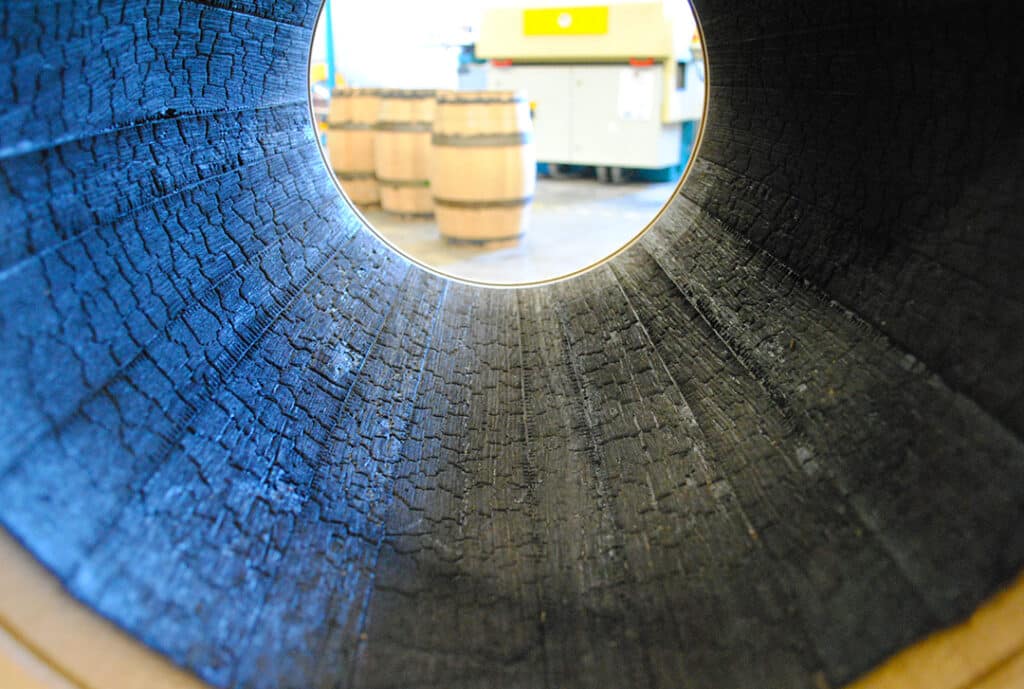
A distiller must decide how much char they want in their barrels. The level of char impacts the type of flavor a barrel will impart over the time that it ages. Even though coopers recommend char levels based on the type of liquid being aged, distillers often experiment with different char levels to fit a signature flavor profile. At Black Button Distilling, we use Char 3 for our Four Grain Bourbon mash bill which is very common in the industry. This Adirondack Barrel Cooperage chart shows how different char levels in their barrels impact bourbon.
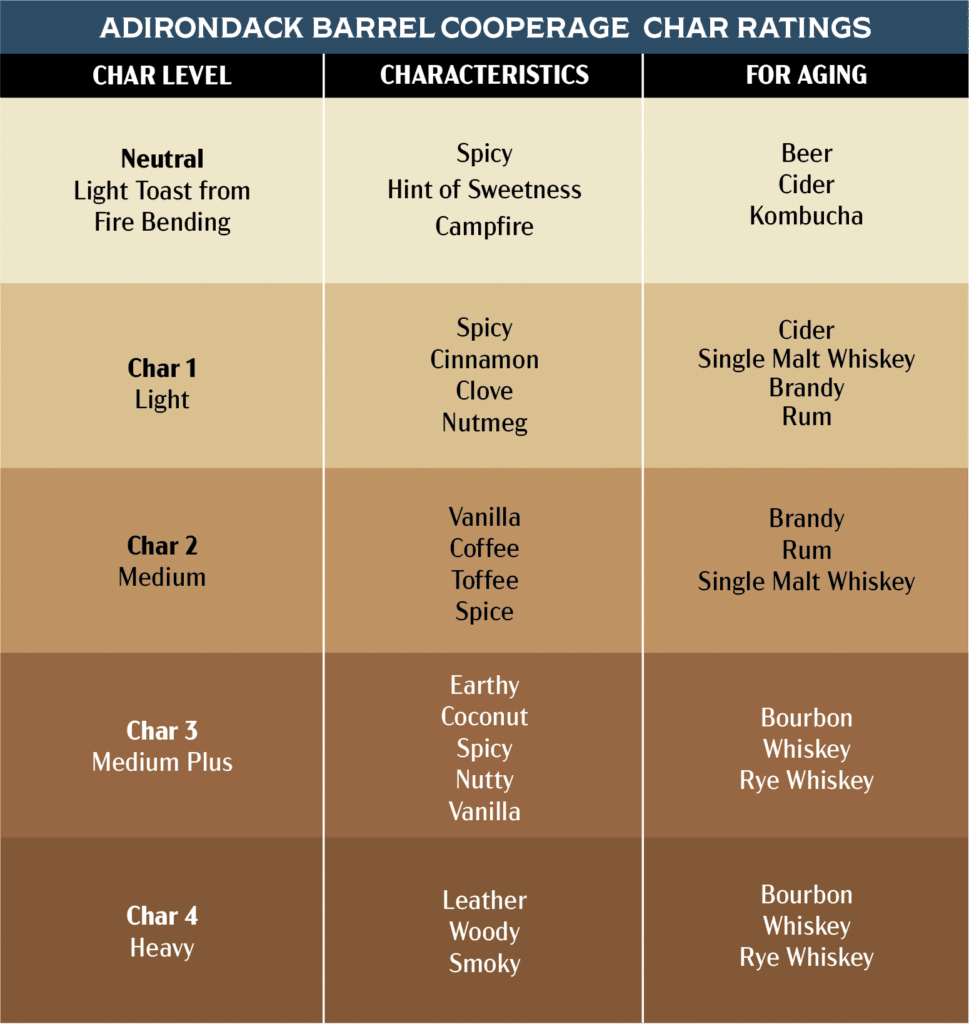
Barrel size is also an important variable distillers must consider. Contrary to belief, a 53-gallon barrel isn’t the only size that makes great bourbon. Today, distillers are commonly aging in 15 and 30-gallon barrels, as well as 53-gallon barrels. There is a misconception that by using smaller barrels, a distillery is trying to rush their bourbon to market too soon, tasting young and unfinished. If the distillate going into the barrel is of the highest quality, the mash bill is correct, and the barrels are of the best quality, smaller barrels can produce fantastic bourbon. However, various barrel sizes will create different flavor profiles. Black Button bourbon aged in 15-gallon barrels for 2 to 3 1/2 years produces an oak-forward character as well as tannins, tobacco, dark fruit, and leather flavors. Our 30-gallon barrels aged for 3 to 5 1/2 years start to impart more vanilla cake batter, slightly sweet wood, and spice flavors. As our 53-gallon barrels mature, there will be even more flavors to explore.
Age may be the one of the most hotly debated topics in the bourbon industry. There is a classic belief that older bourbon is better bourbon. And while bourbon does indeed need to age, there are many factors that determine how long it should age, including.
- The Mash Bill – discussed in (link to Behind the stills Mash Bill)
- Barrel Size
- Char Level
- Aging Climate – Exposure to extreme heat can theoretically expedite aging (Link to Rochester Style)
- How that specific barrel ages

We’ve discussed the variables of barrel aging here and in previous blogs as referenced above. But the last point – how a barrel ages is a qualitative and subjective factor dictated by the talent and skill of the distiller. Every individual barrel will age differently because of its unique characteristics. Even two barrels filled from the same mash bill and distillation that age right next to each other will vary. So how long should a bourbon age? As long as it takes. And that is why distillers constantly sample each barrel over time to decide when it’s perfectly aged and ready to be bottled and poured into your glass.
So next time you’re sipping your favorite pour, close your eyes, take in the aromatics of the bourbon and appreciate the unique character of new charred oak. Cheers!


